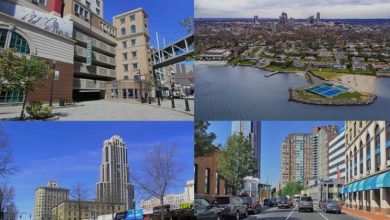Recreational Travel and Its Relation to Neighborhood Opportunity

Recreational travel is an expansive category that covers a range of travel experiences. This can range from visiting friends’ houses or camping to traveling abroad. Recreational travel encompasses relaxation, leisure and enjoyment in equal measure – it doesn’t need to be just about adventure!
Recreational travel can be an excellent way to reduce stress and provide relaxation for both the traveler and his family. It also provides the traveler with a chance to explore new places, making new connections, and learning about the world around them.
visit for multiple topics news: Appvalleyall and Artdaily
Recreational trips are intended to provide relaxation and picturesque views. They also present an opportunity to indulge in hobbies like fishing, knitting or skydiving.
Studies have suggested that men tend to take more leisure trips than women, though the exact cause may not be known. Furthermore, it’s essential to consider whether the location of recreational destinations influences physical activity behavior.
It is essential to comprehend the psychological forces and factors that motivate recreation travelers, since their experience at a destination for recreation can differ significantly from one individual to another. Therefore, understanding individual preferences helps providers provide effective services at their destinations.
At present, most research on recreation has focused on leisure activities. These could include sports, hobbies and other enjoyable pastimes that people find enjoyable.
Sport and leisure travel are becoming increasingly popular, as is leisure travel – any trip taken solely for pleasure or recreation. This could include a business trip abroad or an extended holiday at one’s family residence.
Our study focused on the spatial and temporal distances traveled to recreational destinations by adult residents in an urban environment. This distance was associated with demographic characteristics, physical activity behavior at the destination, and neighborhood opportunities provided by that location.
As a first step to understand this relationship, we assessed the distances adults traveled to beaches and rivers, parks and ovals, and formal recreational facilities. These network distances were calculated using data from Davenport, Iowa using three distinct measures of neighborhood opportunity: beach/river recreation opportunities; park/oval opportunities; and formal recreational facility accessibility.
Results revealed that respondents had many more recreational destinations close to their homes than they actually used. These destinations included parks or ovals (mean = 2797 +- 2866 meters), beaches (mean = 5139 +- 4432 meters), and rivers (mean = 2254 +- 1875 meters).
The network distances were then recalculated using the city’s official public open space map to assess how many recreational opportunities existed within respondents’ neighborhoods. Furthermore, a mobility variable involving two categories of access to motor vehicles was included to increase the range of destinations available to respondents. It was found that those adults who owned a motor vehicle at all times experienced significantly shorter derived network distances compared to those without.


